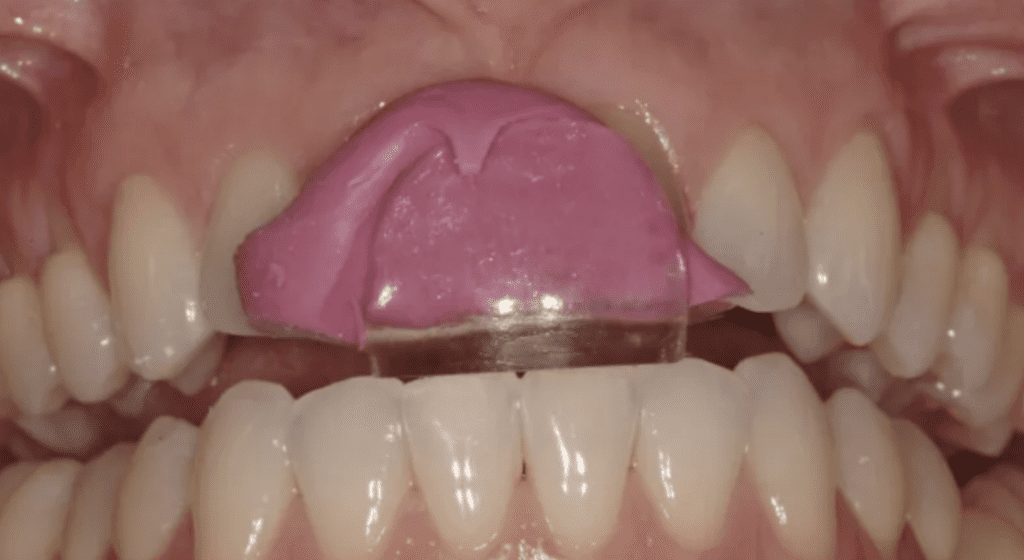By: Lee Ann Brady DMD
Topic Originally Appeared on PankeyGram.org
Deprogramming of the lateral pterygoid muscle is generally done by placing something in the anterior that eliminates posterior occlusal contact. I have two “go-to” deprogrammers.
One is a leaf gauge or what is often referred to as a Lucia jig, and the other is a little device developed by Dr. Keith Thornton, who invented the TAP appliance.
This second favorite is called a “Pankey Bite Stop” and is sold at The Pankey Institute store.
Using a Leaf Gauge
Every time you have a leaf gauge in the patient’s mouth and the patient is instructed to slide their jaw forward, then back and squeeze, the back teeth can’t touch.
As the elevator muscles fire, they pull the condyle up into a centric relation, stretching the lateral pterygoid and eliminating proprioception across the teeth.
I try to find the first point of contact on the forward motion and ask the patient to slide back and squeeze. By the time I do this 10 to 15 times, the pterygoid muscle has fully deprogrammed.
Using a leaf gauge to do occlusal deprogramming works especially well when the patient is already sleeping in a quick splint at night or wearing a full coverage appliance or an anterior-only appliance that has done the deprogramming for us.

Using a Pankey Bite Stop
I use a Pankey Bite Stop when I judge a leaf gauge will not suffice.
The device is relined with Bite Ridge, placed over the upper incisors, and left to set.
The patient is instructed to “sit on it.” I usually set a timer for 15 minutes. My instructions to my patient are not to try to touch their teeth together. The teeth may or may not touch. I instruct them to relax and try to NOT think about their teeth.
Using this device, you do not need to have the patient move forward, back, and squeeze if you allow 15 minutes.
Because the posterior teeth do not touch, the proprioceptive message that normally tells the patient’s brain to activate the pterygoid muscles is eliminated and the lateral pterygoid starts to release.
What if the Patient Needs More?
With some patients, I realize that they will need to sleep in a QuickSplint for a couple of weeks.
In our Essentials One course at Pankey, we use the Quicksplint as an overnight deprogrammer to allow us to capture very accurate diagnostic records.
In my practice, we use this device as a durable deprogrammer, in addition to all the other things that it does. They are easy to fabricate chairside.
Keep Reading:


